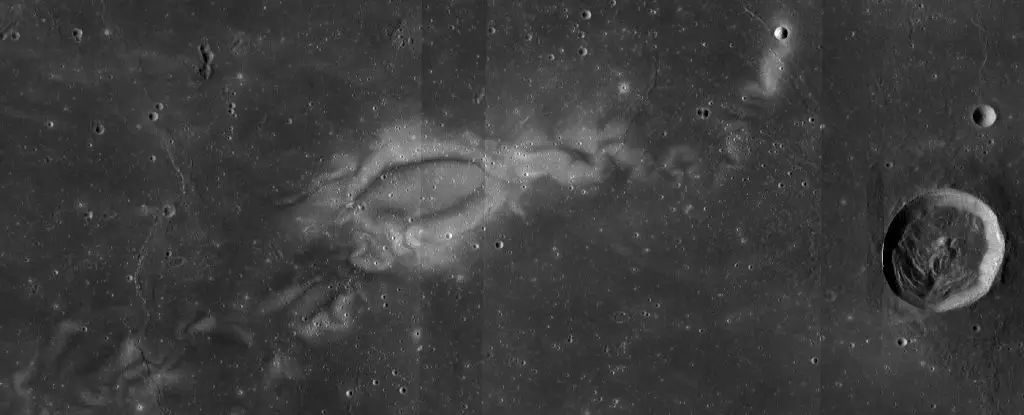Swirling patterns etched into the surface of the Moon have long been a subject of intrigue for scientists and space enthusiasts alike. Known as lunar swirls, these enigmatic features have eluded a clear explanation of their origin. However, recent studies have uncovered a fascinating connection between lunar topography and the formation of these bright patterns. In this article, we will delve into the latest research that sheds light on the link between the shape of the lunar surface and the captivating lunar swirls.
The Enigmatic Lunar Swirls
Lunar swirls, as their name suggests, are intricate swirling patterns that adorn the Moon’s surface. These patterns can be observed in both the dark mare, which are plains of volcanic lunar basalt, and the bright highlands. They are characterized by bright curling lines that are separated by darker gaps. While scientists have made certain discoveries about lunar swirls, such as their association with magnetic fields and buried lava tubes, the cause and relationship between their shape and the lunar surface have remained elusive.
Challenging the Prevailing Theory
For years, the prevailing belief among scientists was that topography had no influence on the location or shape of lunar swirls. However, a recent breakthrough overturned this assumption. A team led by planetary scientist Deborah Domingue of the Planetary Science Institute analyzed a swirl in a region called Mare Ingenii and made a fascinating observation. They found that the bright lines within the swirl were at a lower elevation compared to the darker lanes, with a difference of about 2 to 3 meters (6.6 to 9.8 feet).
Building upon Domingue’s findings, planetary scientist John Weirich and his colleagues conducted a comprehensive investigation of another prominent lunar swirl known as Reiner Gamma. Utilizing data from the Lunar Reconnaissance Orbiter Camera and advanced processing techniques, they meticulously examined the topography of the surface at a high resolution. The results mirrored that of the Mare Ingenii swirl, with the bright areas within Reiner Gamma found to be approximately 4 meters (13 feet) lower than the dark areas.
However, the connection between topography and swirls is not as straightforward as initially believed. Weirich explains that the correlation between elevation and swirl shape is only evident when comparing the average height of the bright areas to the average height of the dark areas. If the bright areas were uniformly lower than the dark areas, the relationship would be easily demonstrable. This complexity underscores the need for further study and the examination of additional lunar swirls to establish a pattern.
Unraveling the Mystery
While the elevation changes observed in Mare Ingenii and Reiner Gamma provide valuable insights, they do not yet offer a complete understanding of the cause behind lunar swirls. Nevertheless, each new piece of information brings scientists closer to unraveling their mysterious secrets. Unlike anything found on Earth, lunar swirls offer a unique perspective on the Moon’s history and the hidden dynamics beneath its tranquil surface.
The Quest for Answers
Despite numerous hypotheses about their formation process, the origin of lunar swirls remains a subject of active investigation. Weirich highlights the existence of supporting observations for each hypothesis, as well as contradictory evidence. This uncertainty points to the complex nature of lunar swirl formation, which could involve a combination of known processes interacting or perhaps even a yet-to-be-discovered mechanism.
The study of lunar swirls has taken a significant step forward with the discovery of a link between the surface topography and their shape. By uncovering elevation differences within the swirls, researchers have challenged the prevailing theory and opened new avenues for understanding their formation. As scientists continue to explore and analyze these captivating lunar features, the Moon’s enigmatic swirls may one day unveil the secrets of its past and shed light on the remarkable processes shaping our celestial neighbor.


Leave a Reply